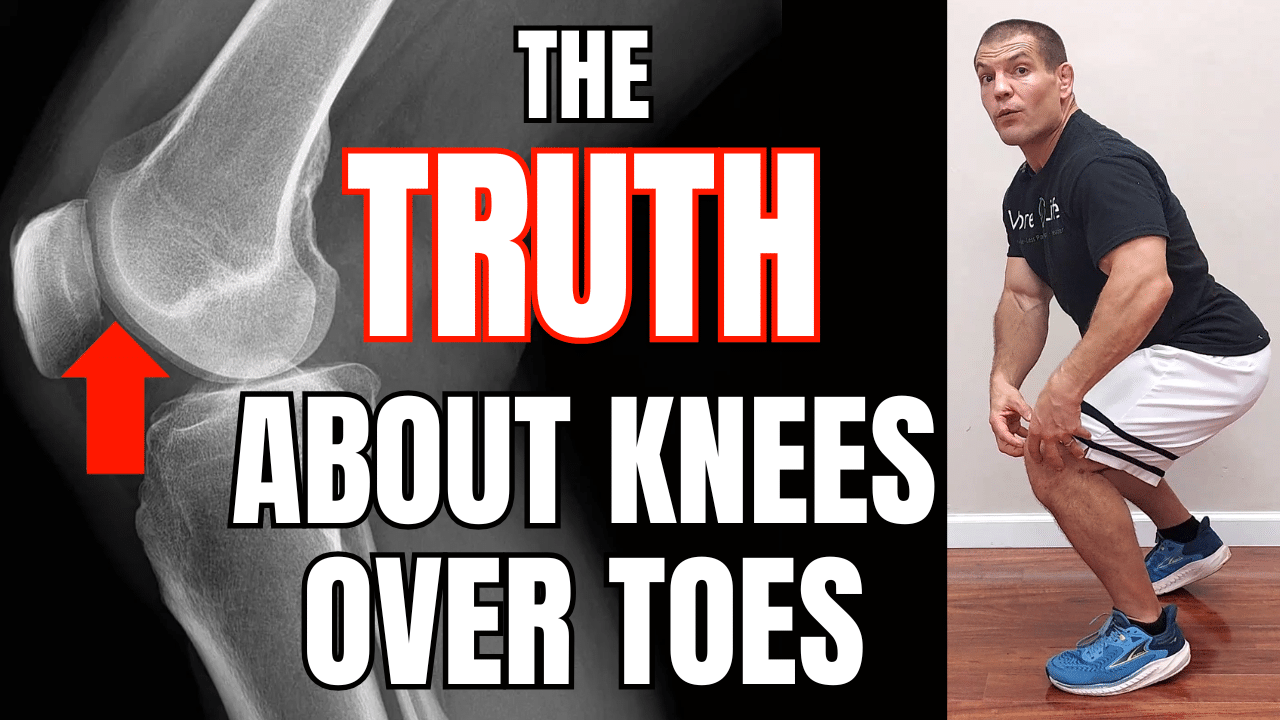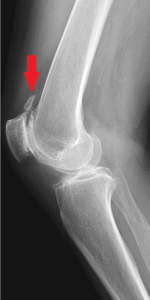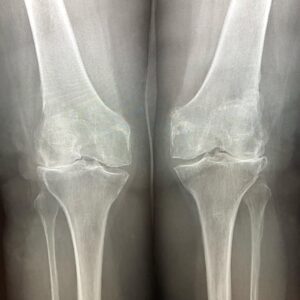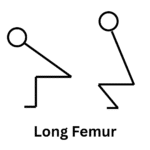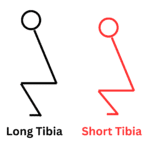If you have knee arthritis, you may have heard that you should never let your knees in front of your toes. But is knees over toes bad for your knees?
Watch the video to learn when it helps, when it hurts, and how body structure and arthritis change the answer. Plus, learn simple tips and exercises to help.
Table of Contents
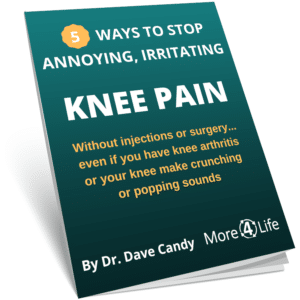
Is Knees Over Toes Bad For Your Knees?
You may have heard this rule: “Never let your knees move in front of your toes.”
But is that advice helping you? Or holding you back?
In daily life, your knees do pass your toes. Think stairs, sitting, and squatting down.
In this post, we review the pros and cons for knee arthritis. We also show how your body shape affects the movement. Finally, you’ll learn simple principles that help almost everyone.
Why People Say “Don’t Let Your Knees Pass Your Toes”
The rule came from older biomechanics research. As the knee bends deeper, pressure behind the kneecap (the patellofemoral joint) goes up. At end range, contact area can go down. Less contact area means higher pressure on the parts that touch.
Key point: This mainly relates to the patellofemoral joint.
It is not the same as the space between the thigh bone and shin bone (the tibiofemoral joint).
If your pain is from muscles or other soft tissues, knees over toes is not automatically bad.
If your pain is behind the kneecap, deeper knee bend can feel sore at first. That does not mean it is always harmful. It means you need the right depth, load, and pace.
When Knees Over Toes Can Help
The “knees over toes” approach grew popular through coaches like Ben Patrick. He is tall and dealt with patellar tendinopathy (jumper’s knee). That is a tendon issue, not arthritis.
With tendon problems, gradual loading in bent-knee positions can help the tendon adapt. For some people, training into forward knee positions builds capacity for real life tasks, like stairs and rising from a chair.
But what about arthritis? If you have patellofemoral arthritis, deep angles can be sensitive. You may still train them, but you should progress slowly and stay within a comfortable range.
Why Body Proportions Change the Answer
Balance matters. When you bend your knees, your hips move back. To avoid falling, something must move forward. That is often the knees.
- Long femurs: push the hips farther back. This often requires more knees-over-toes to stay balanced.
- Tibia length: longer tibias make forward shin angle easier. Shorter tibias make it harder.
- Foot length: short feet make your knees look “past the toes” sooner. Long feet delay that look.
- Trunk length and mass: a longer or heavier trunk shifts demand at the knees. You may need more forward knee travel to keep balance.
- Hip rotation and stance: a wider, turned-out stance can reduce how far the knees must travel forward.
Two people can do the same squat but need different knee positions. That is normal.
So…Should You Do Knees Over Toes?
- Patellofemoral arthritis: start with shallow angles. Add depth slowly if symptoms allow.
- Tibiofemoral arthritis: knees over toes can be okay with good alignment and smart loading.
- Soft tissue pain (muscle/tendon): often tolerates forward knee travel if you progress well.
When in doubt, work with a clinician who understands load progressions and your unique structure.
Principles That Help Everyone
Ankle Mobility (Dorsiflexion)
You need the ankle to bend so the foot stays flat while the knee moves forward. The ATG split squat or an elevated lunge can help.
Move only to a pain-free depth. Build range over time.
“Stretch Strength” (Eccentric and Long-Length Work)
Get stronger while muscles are lengthened. If step-ups bother your knees, try isometrics first. Push down into a chair in a bent-knee position at a comfortable effort. Hold, rest, and repeat.
Safe, Progressive Loading
Progress matters. You can use options like backward sled pulls or wall sits. These tools let you load safely and control the dose. Increase time, depth, or weight slowly.
Smart Loading, Footwear, and Stance Tips
- Load placement: Back squats shift weight backward and need more trunk lean. Front squats shift weight forward and often need less knees-over-toes to balance.
- Counterbalance option: Holding a plate in front helps you stay upright with less knee travel.
- Footwear and wedges: Heel-elevated weightlifting shoes or plates under the heels can help if ankle mobility is limited.
- Stance width and toe angle: A wider, slightly turned-out stance can reduce forward knee translation and trunk lean.
- Heels down cue: Drive through your heels to bring the glutes into the lift and share the work.
FAQs
Is knees over toes bad if I have knee arthritis?
Not always. With patellofemoral arthritis, deep angles can feel sore. Start shallow, load slowly, and only add depth if symptoms allow.
Is knees over toes bad for the cartilage?
Deeper angles increase pressure behind the kneecap. That does not mean the movement is always harmful. The right range, load, and pace matter.
Is knees over toes bad for older adults?
It depends on the person. Some older adults do very well with it. Others need a different stance, range, or exercise choice.
How do I know if it’s too much?
Use a simple rule: pain during the set stays mild, and symptoms settle within 24 hours. If not, reduce depth, load, or volume.
Bottom Line
So, is knees over toes bad? It depends on your joint health and your body’s proportions. For many people, it is safe when you keep good form and progress slowly. For patellofemoral arthritis, start with shallow angles and build tolerance over time.
Choose the range and stance that fit your body. Train what you can do well today, and progress from there.
Need More Help For Knee Pain?
If you live in the St. Louis area and need more help for knee pain, we'd be happy to help you here at More 4 Life.
Just tap the button below to request an appointment.

